10 Chinese Calligraphy in the Republican Period
Part I. Culture
1 Chinese Calligraphy in the Republican Period
The Republic of China (中华民国/中華民國/zhōng huá mín guó) (1912-present) overthrew the Qing in 1911 and thus launched the Republican Period. With the Qing‘s fall, the New Culture Movement began, one that defied every facet of traditionalism. The status quo in Chinese was impossible to maintain as civil war ensued between the Kuomintang (the nationalists) and the Communist Party of China. Further chaos ensued during the Second Sino-Japanese War. Somehow surviving through this upheaval, artists began to integrate Western art techniques and perspectives into traditional Chinese painting. In 1949, with the founding of The People’s Republic of China in the mainland, the new government guided art forms. Nearly two decades later, the most earthshaking impact of the Cultural Revolution (1966-1976) was “Destruction of the Four Olds,” with major consequences for pottery, painting, literature, art, architecture, and more. From the 1980’s onward, art forms became increasingly diverse. Calligraphy and painting revived amid widespread popularity. Famous calligraphers and painters during this period are Wu Changshuo (吴昌硕/呉昌碩) (1844-1927), Huang Binhong (黄宾虹/黃賓虹) (1865-1955), Yu You-Ren (于右任/於右任) (1879-1964), Shen Yinmo (沈尹默) (1883年-1971), Xu Beihong (徐悲鸿/徐悲鴻) (1895–1953), Lin Sanzhi (林散之) (1898-1989), Zhang Daqian (张大千/張大千) (1899–1983), Fu Baoshi (傅抱石) (1904–1965), Li Keran (李可染) (1907-1989), Zhao Puchu (赵朴初/趙檏初) (1907-2000), Qigong (启功/啓功) (1912-2005), Wang Jing-Zhi (王静芝/王靜芝) (1916-2002), and Liu Bing-Nan (刘炳南/劉炳南) (1924-). See Figure 1 for painting by Qi Baishi, Figure 2 for calligraphy by Qigong, and Figure 3 for painting by Li Keran.
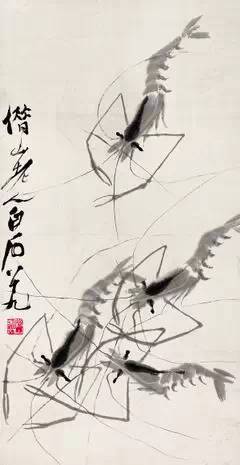
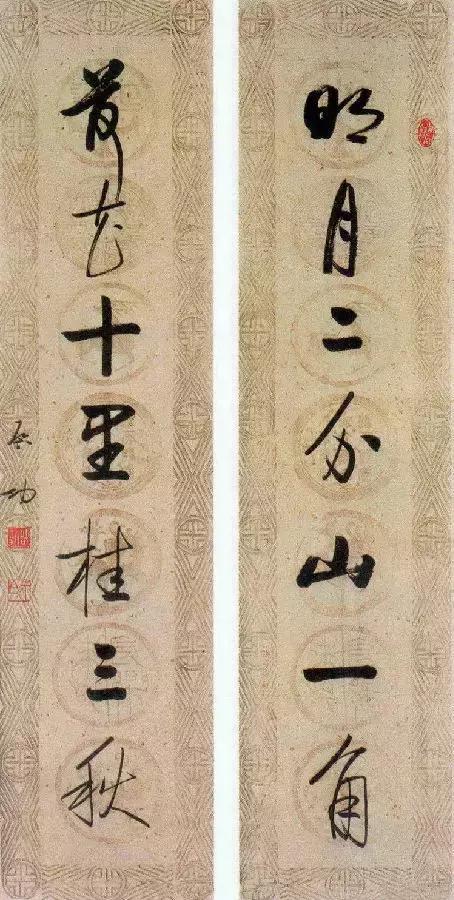
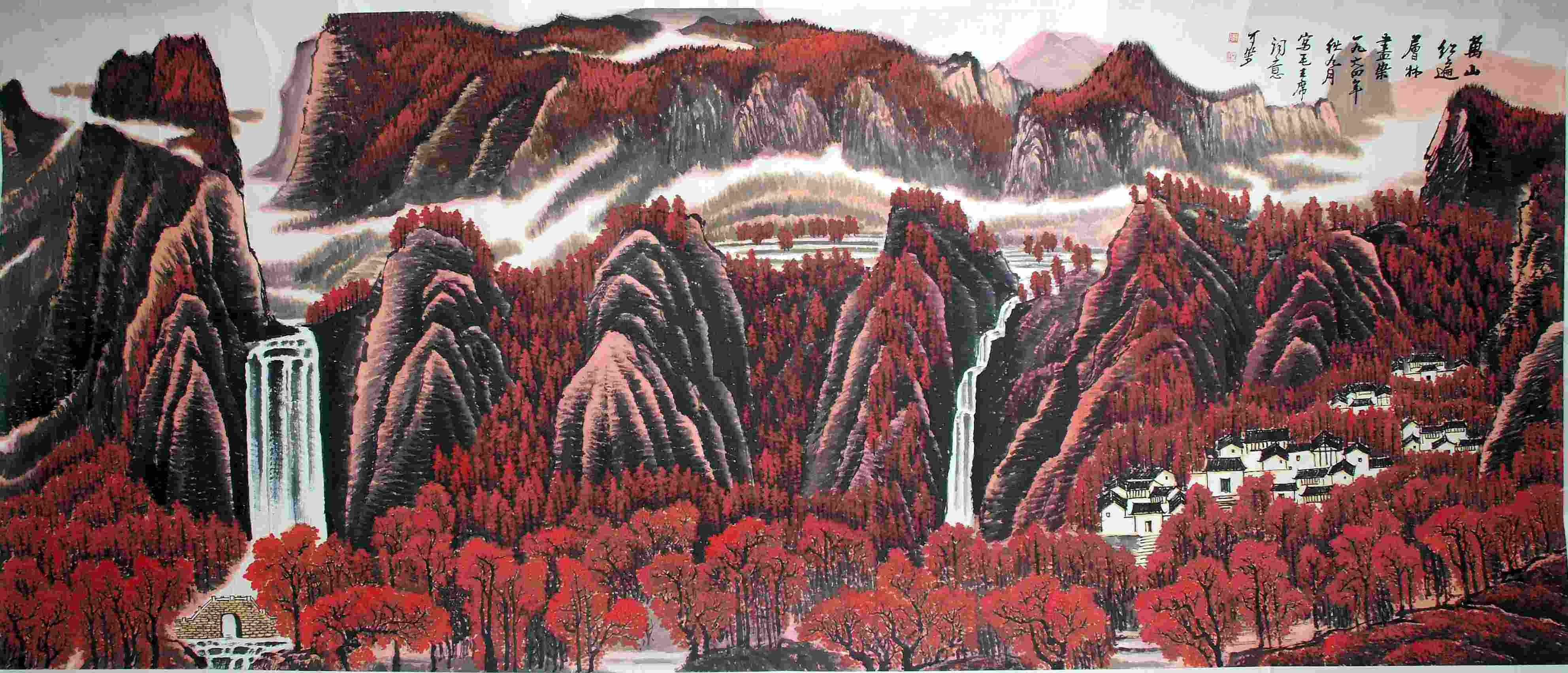
2 Calligraphy or Painting Inscriptions
Once an artist completes the main content of a painting or calligraphy piece, the individual normally will provide inscriptions. These could include the source of the main content of the artwork; recipients of the piece; date; signature; and author’s seal. Except for the seal, inscriptions are written in running script. (For a beginner, regular script should be the preferred calligraphy style).
2.1 Date
Instead of the solar calendar, the Chinese use a traditional system to denote years. It’s a combination of Celestial or Heavenly Stems 天干/tiān gān and Earthly Branches 地支/dì zhī. Ten Heavenly Stems, combined with 12 Earthly Branches, form a cycle of 60 years. Each year is given a certain name with one heavenly stem and one earthly branch (Table 1). Traditionally, calligraphy, painting, and other art forms are dated with a particular year’s name. Nowadays people also accept modern-era dates.
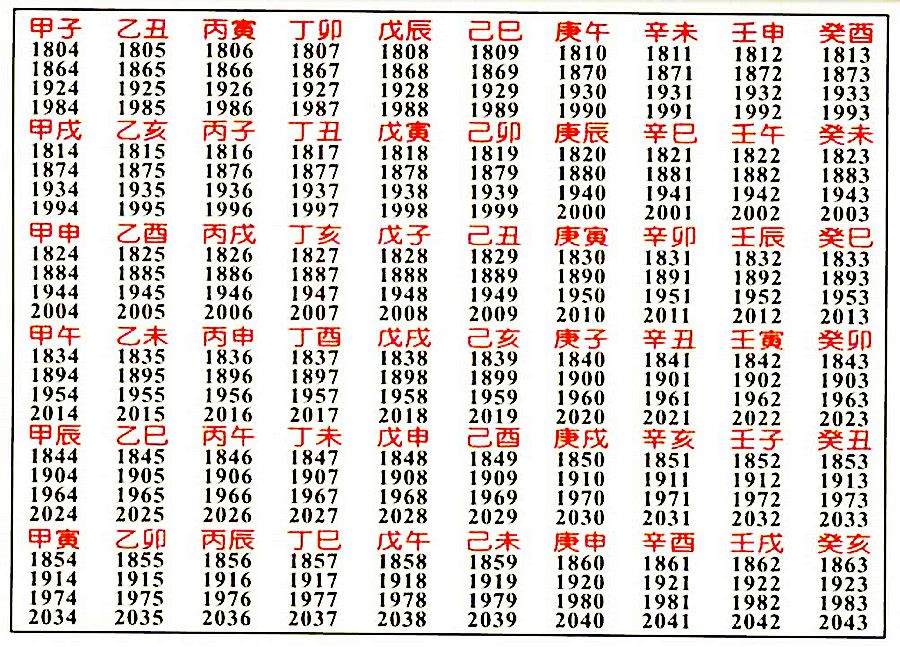
In general, information of a particular year is sufficient to date a work of art. To provide more specifics about a date, artists might include information about a season. The four seasons in Chinese are 春/chūn (spring), 夏/xià (summer), 秋/qiū (fall), and 冬/dōng (winter). Each season should be used together with 月/yuè (month) or 日/rì (day) to indicate the month and season in which an artist has finished the piece. A seasonal plant may also indicate a date.
2.2 Seal
A seal (印/yìn) is normally written in seal script. It is not just the mark of ownership; it also has become the essential element in the piece because its red color is so prominent on a normally black-and-white rendering. The artist may use one seal or two different ones on one piece.
Figure 4 is a piece of calligraphy created by contemporary calligrapher Tian Yunzhang with basic inscriptions.
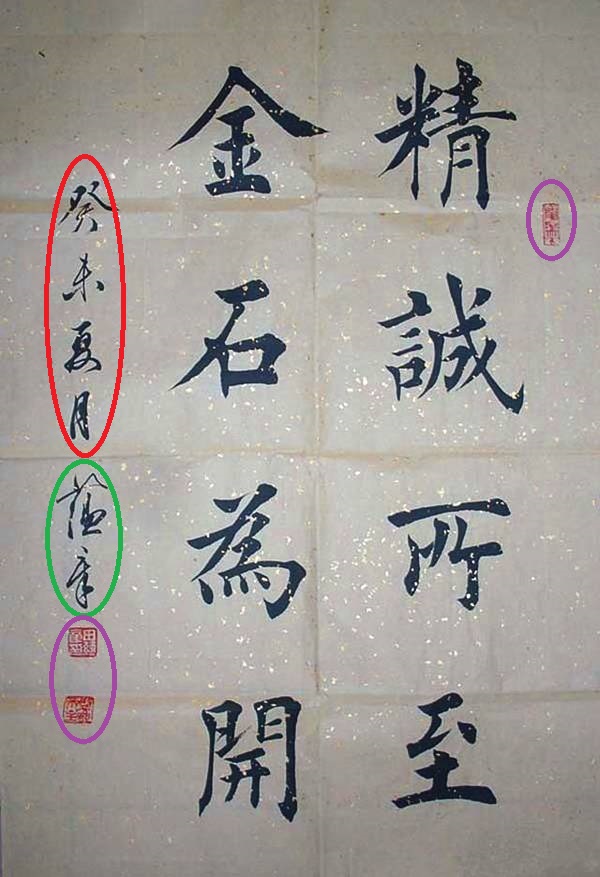
Part II. Calligraphy Writing
1 Characters
年/nián (year), 春/chūn (spring), 夏/xià (summer), 秋/qiū (fall), 冬/dōng (winter), 月/yuè (month; moon), 書/shū (to write; book)
2 Sample Calligraphy Characters
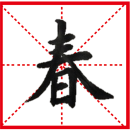
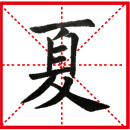
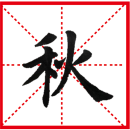
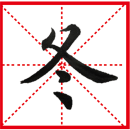
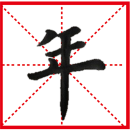
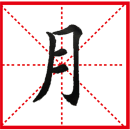
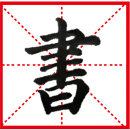
3 Writing by following rules
- Prepare tools and materials.
- Start to write under instruction.
- Be aware of rules for proper posture and stroke order.
4 Homework
4.1 Write one piece of calligraphy work assigned by the teacher.
4.2 Research the importance of calligraphy in Chinese culture.
4.3 Research the relationship between Chinese calligraphy and other art forms.
4.4 Research the influence of Chinese calligraphy in other Asian countries such as Japan and Korea.
Part III. Additional Resources
- The effects of Chinese calligraphy handwriting and relaxation training: https://www.sciencedirect.com/science/article/pii/S0020748909003502
- Chinese calligraphy and Health: http://www.doc88.com/p-1052865591929.html

